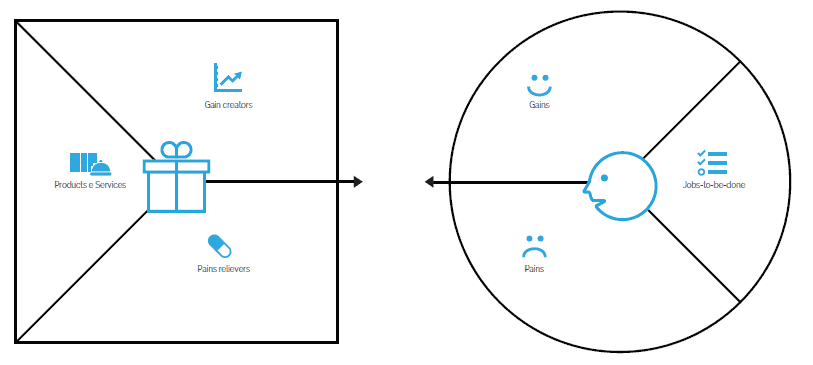Value Proposition Canvas is a business model tool that helps you make sure that a company’s product or service is positioned around customers’ values and needs. The tool has been created by Alexander Osterwalder, Yves Pigneur, and Alan Smith. The same authors of the Business Model Canvas, aiming to map the value perceived by customers. The primary purpose is, therefore, to create a fit between the product and market. For this to happen, the Value Proposition Canvas explores more deeply these two (out of the nine) blocks from the Business Model Canvas: Customer Segment and Value Proposition.
Contents
What are the advantages of using the Value Proposition Canvas?
- Understanding the customer, with their needs and expectations;
- Developing a product in accordance with what your customer need and want;
- Comparing a product you already have with the user’s need;
- Finding your product-market fit;
- Avoiding producing something nobody wants,
- Saving time and money.
What is Value Proposition Canvas like?
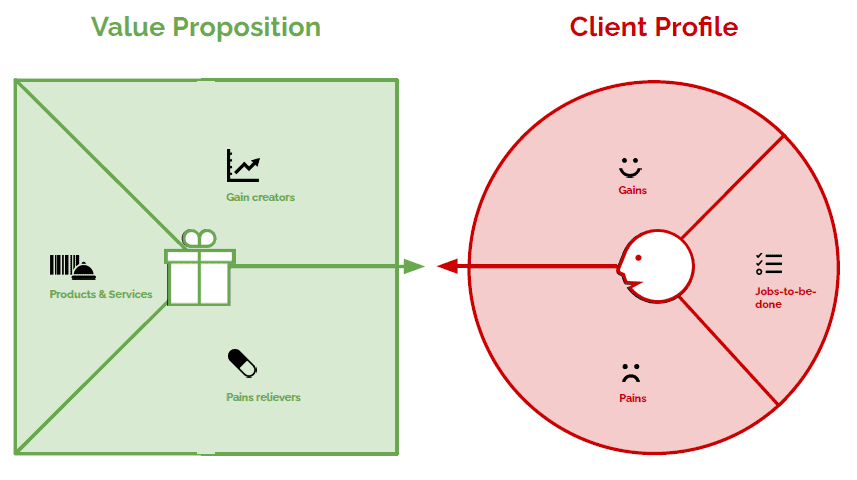
As said before, Value Proposition Canvas is made up of only two blocks – Value Proposition and Customer Segment. They are the core of the business model because they focus on “What” and “To whom”. In other words, how your company delivers value to your audience. The canvas is divided into two sides: on the right side, it’s the Client Profile. And that is divided into Jobs-to-be-done, Pains, and Gains. On the left side, it’s the Value Proposition, also subdivided into three: Products & Services, Gain Creators, and Pain Relievers. Let’s check each one out:
Client Profile
Jobs-to-be-done
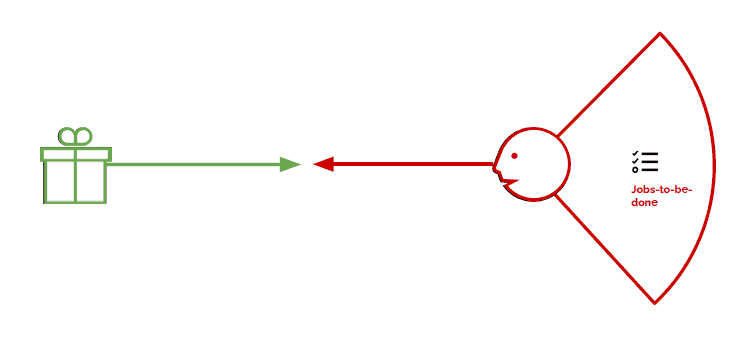
This is about what your customer is trying to do. You have to include all tasks customers are trying to perform, the problems they are trying to solve, and the needs they want to satisfy. It’s also important to note down the frequency and the importance of each job, and all the different roles the customer have to play, and in what contexts. To fulfill this step, you may ask yourself:
- What functional tasks is my customer trying to perform? (day by day tasks, problems at work, etc.)
- What social tasks is my customer trying to accomplish? (get a promotion, gain status, have a network, etc.)
- What emotional tasks is my customer trying to complete? (get in shape, feel good, feel motivated, etc.).
- What basic needs do they need/want to have satisfied? (communication, sex, hygiene, etc.).
Pains
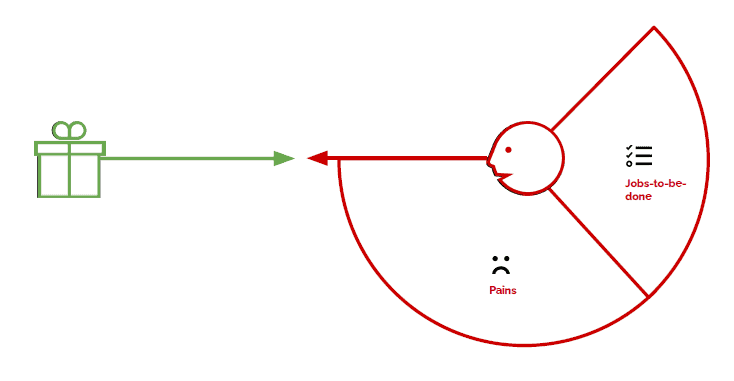
This one encompasses everything that annoys your customer while they are performing their jobs-to-be-done, such as negative experiences and emotions, challenges, risks involved, financial costs, mistakes, and consequences, etc. Remember to classify each pain as severe or light and note down how often it takes place as well. To complete this step, you can make some questions:
- What is expensive for my customer? (regarding time, cost, effort, etc.)
- What makes my customer feel bad? (frustrations, disappointments, failures, physical pain, etc.)
- What are the main difficulties and challenges of my customer’s faces? (physical, intellectual or emotional limitations to do something, resistance, understanding certain situations, etc.)
- How current solutions are leaving to be desired for my customer? (bad performance, much effort, lack of functionality, defects, etc.)
- What are the negative consequences for my customer? (losses of power, status, money, time, trust, etc.)
- What risks is my customer afraid of? (financial, social, technical, etc.)
- What is keeping my customer awake at night? (concerns, challenges, debts, bad health, etc.)
- What are the most common mistakes my customer makes? (creating expectations, misunderstandings, errors in use, etc.)
- What is preventing my customer from adopting solutions? (investment, learning curve, resistance to changes, etc.)
Gains
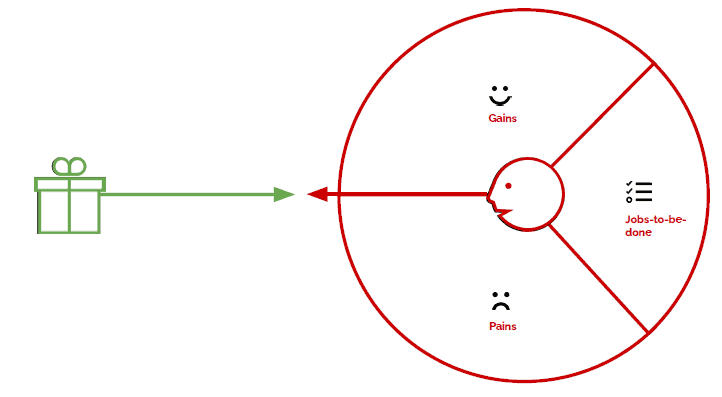
They are all the benefits your customer expects or wishes – or even something that would surprise them positively –, whether they are functional, emotional, social or financial. In short, everything that delight them and make their life easier, more joyful or more successful. You may rank each gain by relevance and indicate the frequency of them. To do so, you can follow some questions, such as:
- What kinds of savings would make my customer happy? (time, money, energy, etc.)
- What results do my customer expect? Which ones can mesmerize them? (quality level, profits and gains, savings and improvements, etc.)
- What current solutions enchant my customer? (functionalities, performance, quality, etc.)
- What can make my customer’s tasks easier? (lower learning curve, more services, lower costs, etc.)
- What positive consequences do my customers want? (power, status, acknowledgment, satisfaction, motivation, etc.)
- What is my customer looking for? (design, guarantees, specific features, functionality, etc.)
- How does my customer measure success and failure? (cost, performance, speed, quality, beauty, likes on social networks, etc.)
- What would increase my customer’s chances of adopting a solution? (lower investment, longer guarantee, better performance/quality/design, etc.)
It’s worth remembering that you must create one profile for each customer segment. After mapping your customers’ profiles, the next step is to set what value they are going to perceive with your product or service.
Value Proposition
Products & Services
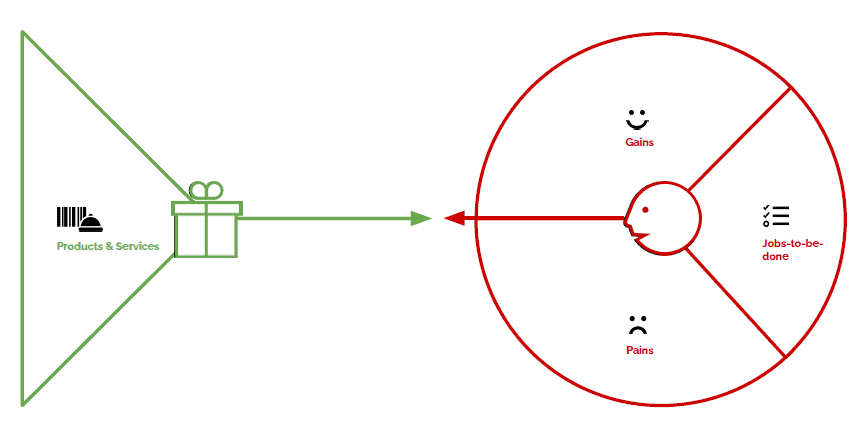
Include all the products and services you are going to deliver. About each one, ask yourself:
- Can the product/service help to accomplish any job-to-be-done, whether functional, social, emotional, needs, wishes, roles, etc.?
- Is the product/service tangible, digital/virtual, or financial?
- Is the product/service crucial or trivial? How relevant is it?
- How often is the product/service used by my customer?
Gain Creators
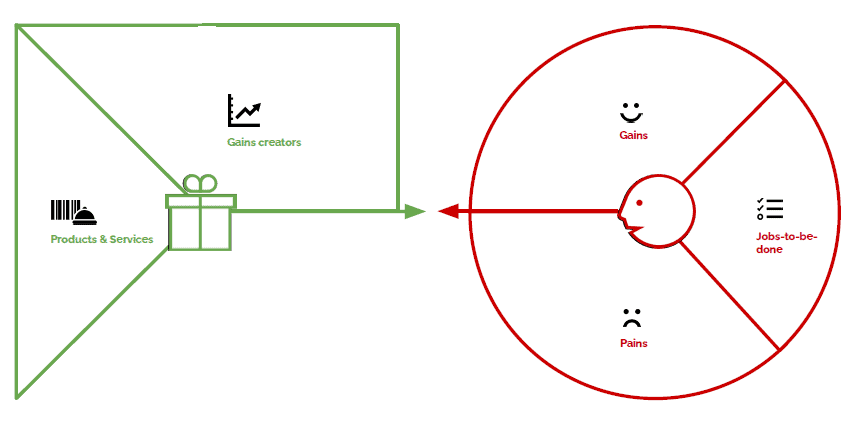
Involve how the product/service offers the customer added value, what are the benefits your product brings, and if your customer’s wishes and expectations are reached. After all, how it makes your customer happier. Again, you should rank every gain your product or service creates according to relevance to your customers (if substantial or insignificant) and indicate how often it occurs. To do that, ask if your product/service:
- creates savings that make your customer happy (in terms of time, money, effort, etc.);
- produces results that your customer expects or that goes beyond their expectations (better level of quality, more of something, less of another);
- copies or does better than current offerings that delight your customer (in relation to specific functionalities, performance, quality, etc.);
- makes your customer’s tasks or life easier (lower learning curve, better usability, accessibility, more built-in services, lower cost of ownership, etc.);
- creates positive social consequences desired by your customer (make it look good on tape, produce or increase power, status, etc.);
- does/has something the customer is looking for (good design, specific or better functionalities, etc.);
- meets customers dreams (help on large goals, produce great relief, etc.);
- produces positive results that match criteria of success or failure (better performance, lower cost, etc.);
- makes adoption easier (reduce cost, lower investment, lower risk, higher quality, performance or design, etc.).
Pain Relievers
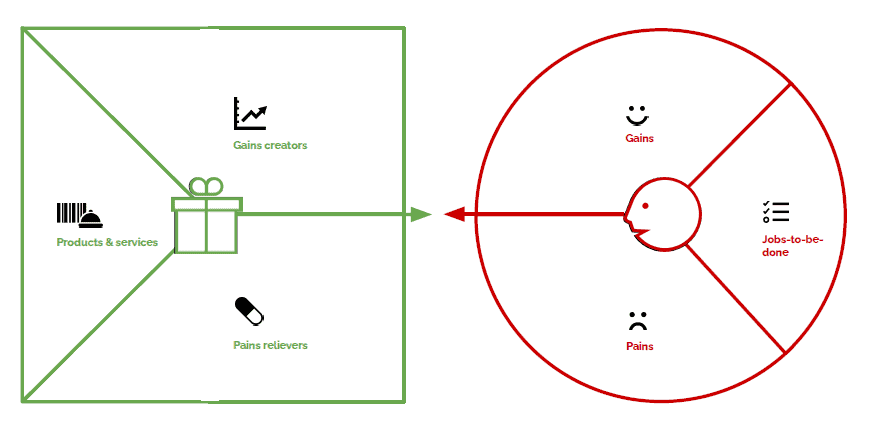
Describe how your product/service relieves the customer’s pains. Identify if you reduce their costs, negative feelings, efforts, risks, negative consequences, mistakes… Anyway, how you make your customer feel and sleep better. It’s important, also, to rank each pain, according to its intensity, to be able to understand how deeply your product/service help your customer. To help you out, ask if your product/service:
- produces savings (in terms of time, money, effort, etc.);
- makes your customer feel better (they end up with frustrations, discomforts, things that give headaches, etc.);
- performances solutions (new features, better performance, better quality, etc.);
- puts an end to the difficulties and challenges your customer faces (make things easier, help accomplish tasks, eliminate resistance, etc.);
- eliminates social consequences that your customer encounters or is afraid of (losses of respect, admiration, power, confidence, status, etc.);
- eliminates risks that your customer is afraid of (financial, social, technical risks, or anything else that can go very wrong);
- helps your customer sleep better at night (help with major problems, reduce worries, etc.);
- limits or eradicates common mistakes that your customer makes (errors of use, difficulties of use, etc.)
- eliminates barriers that prevent your customer from adopting new solutions.
When to use Value Proposition Canvas?

In few words, this tool comes to facilitate the job of putting yourself in your customers’ shoes and understanding their world. The final goal, as mentioned above, is to discover your Product Market Fit, through positioning products/services according to the necessities, expectations, and interests of your targeted customer. With Value Proposition Canvas, you have an overview of how your value proposition is going to impact your customer’s life. The product-market fit is achieved when the products and services match most the most important gains and pains of the customer profile. Usually, the Value Proposition Canvas works properly:
- At the beginning of a startup;
- To restructure the sales process, in order to understand the customers better;
- To add a new feature to a product, that may demand great investments, whether of time or resources (or even both);
- To expand into a new market or customer segment, and you need to get to know how these new customers will receive your product/service.
It’s worth remembering that fulfilling this canvas is only the first stage. It’s essential to validate the hypothesis, by taking tests and getting feedback. That can help go back to the canvas and refine it. And, it is also important to highlight that the Value Proposition Canvas does not substitute the Business Model Canvas. They work better combined. One does not exclude the other.
Check out our Premium Value-Proposition Powerpoint Template:
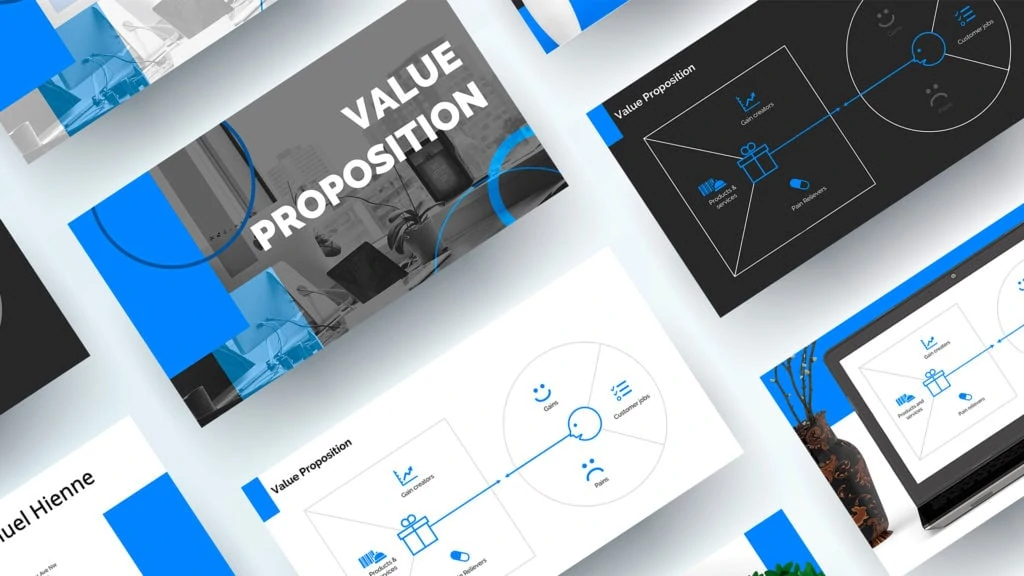
Check it out by clicking here.


